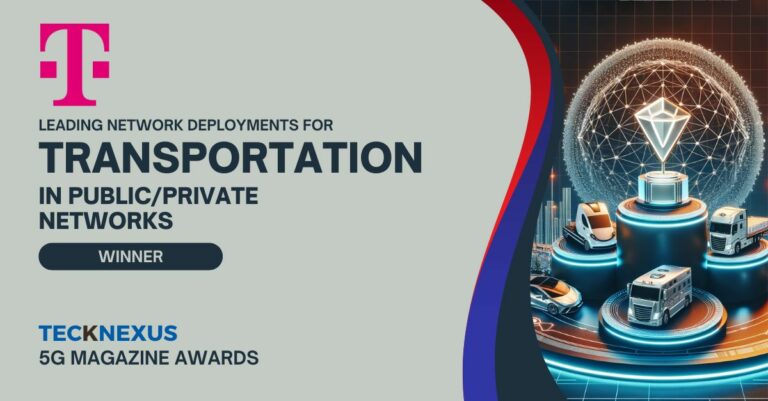The Emerging Landscape of Autonomous Driving and Potential of 5G
The concept of autonomous vehicles, once a fixture of science fiction, is now becoming a tangible reality. With advancements in technology, the first wave of partially automated vehicles equipped with various assistance systems has already hit the roads. The journey towards fully autonomous driving – where vehicles operate independently without driver intervention – is progressing rapidly, albeit with challenges and cautious optimism.
The Current State of Autonomous Vehicle Technology
Today’s autonomous vehicles rely heavily on an array of sensors, cameras, and algorithms to navigate and respond to road conditions. These technologies enable vehicles to perform basic functions like lanekeeping, adaptive cruise control, and automated parking. However, the ultimate goal of Level 5 autonomy – complete automation in all driving scenarios – remains a work in progress. Key obstacles include refining sensor accuracy, improving decision-making algorithms, and ensuring safety across diverse and unpredictable road conditions.
Exploring the Role of 5G in Autonomous Vehicle Development
With its promise of high-speed data transmission, minimal latency, and enhanced connectivity, 5G has the potential to elevate the capabilities of autonomous driving systems significantly. The technology’s ability to handle vast amounts of data in real-time is crucial for the rapid processing and decision-making required in autonomous driving.
5G: Enhancing Vehicle-to-Everything (V2X) Communication
A critical component in the evolution of autonomous vehicles is Vehicle-to-Everything (V2X) communication. Here, 5G’s prowess could be transformative. By enabling faster and more reliable communication between vehicles, infrastructure, and other road users, 5G could facilitate better traffic management, reduce accidents, and improve overall road safety. For instance, with 5G, an autonomous vehicle could receive timely information about road conditions, traffic congestion, or potential hazards directly from sensors embedded in the urban infrastructure or from other connected vehicles.
Navigating Challenges and Setting Realistic Expectations
While the integration of 5G into autonomous vehicles is promising, it’s important to approach this evolution with realistic expectations. The widespread deployment of 5G networks, especially in varying geographical and urban landscapes, presents its own set of challenges. Furthermore, aligning this technology with the current state of autonomous vehicle development requires careful consideration of various factors, including regulatory frameworks, public acceptance, and cybersecurity concerns.
The Road to 5G-Enabled Autonomous Driving
As we navigate towards a future of 5G-enabled autonomous vehicles, we stand at the cusp of a major shift in transportation. This journey is marked by both exciting possibilities and complex challenges. The seamless integration of 5G into the autonomous driving ecosystem will not only enhance vehicle performance but also pave the way for a more connected, efficient, and safer transportation system.
Infrastructure Considerations for Integrating 5G in Autonomous Vehicles
The integration of 5G technology can further advance the evolution of autonomous vehicles. Let us delve deeper into the infrastructure required to support this integration, addressing both the technical complexities and the collaborative efforts necessary to establish a 5G framework conducive to autonomous vehicle operations.
Key Requirements of a 5G Network for Autonomous Driving
The promise of 5G in the context of autonomous vehicles hinges on its ability to deliver high-speed, low-latency, and reliable connectivity. Autonomous vehicles will generate and exchange vast amounts of data, necessitating a network capable of handling such loads with minimal delay. This requirement extends beyond simple vehicle-to-vehicle (V2V) communication, encompassing broader vehicle-to-everything (V2X) interactions, including connections with traffic infrastructure, pedestrian devices, and cloud services.
Overcoming Deployment Challenges
Building a 5G network that meets these requirements involves significant challenges. One primary concern is achieving uniform coverage, particularly in urban areas with high vehicular density and in rural regions where network infrastructure is less developed. Solutions may include the strategic placement of 5G cell towers and small cells to ensure continuous connectivity. Additionally, the transition from existing 4G LTE networks to more advanced 5G networks requires substantial investment and careful planning to avoid service disruptions.
The Imperative of Cross-Sector Collaboration
Effective integration of 5G into the autonomous vehicle landscape is not solely a technological endeavor. It requires extensive collaboration across different sectors. Telecommunication companies, automotive manufacturers, tech firms, and policymakers must work together to create a cohesive ecosystem. This collaboration extends to establishing uniform standards for communication protocols, data security, and privacy, ensuring that all autonomous vehicles, regardless of manufacturer, can communicate effectively and securely on a 5G network.
Edge Computing: Enhancing Real-Time Data Processing
Edge computing plays a pivotal role in the 5G infrastructure, facilitating faster processing of data near its source. For autonomous vehicles, this means the ability to make real-time decisions based on immediate environmental inputs. Implementing edge computing in 5G networks reduces reliance on distant data centers, minimizes latency, and enhances the overall efficiency and safety of autonomous vehicle operations.
Addressing Cybersecurity in a 5G Network
As autonomous vehicles and 5G networks become increasingly interconnected, addressing cybersecurity concerns becomes paramount. The network must be fortified against potential breaches that could compromise vehicle safety. This involves implementing advanced encryption protocols, continuous monitoring for threats, and developing robust cybersecurity frameworks to protect against hacking and data theft.
Navigating Towards a 5G-Enabled Future
The path to a fully integrated 5G and autonomous vehicle ecosystem is complex and multifaceted. It requires not only technological advancements but also regulatory, economic, and collaborative efforts. As we navigate this path, the potential rewards are immense, offering a future where autonomous vehicles operate seamlessly and safely, underpinned by the transformative power of 5G technology.
Assessing 5G’s Impact on Safety and Communication in Autonomous Vehicles
The integration of 5G technology into the realm of autonomous vehicles is poised to revolutionize how these vehicles operate and interact with their environment. Let’s explore the potential impact of 5G on enhancing safety features and improving communication systems within autonomous vehicles.
The Role of 5G in Vehicle Safety
Safety is paramount in the development of autonomous vehicles. 5G technology, with its high-speed connectivity and extremely low latency, offers significant advancements in this area. The ability of 5G to transmit large volumes of data at unprecedented speeds is crucial for real-time decision-making in autonomous vehicles. This rapid data exchange can enhance the vehicle’s response to dynamic road conditions, potential hazards, and sudden changes in the driving environment, thereby significantly reducing the risk of accidents.
Improving V2X Communication with 5G
Vehicle-to-Everything (V2X) communication is integral to the functioning of autonomous vehicles, and 5G is set to be a key enabler in this aspect. Through enhanced V2X communication, autonomous vehicles can interact seamlessly with other vehicles, pedestrians, road infrastructure, and even the broader network. This interaction includes the exchange of safety-critical information, such as traffic conditions, road works, and emergency vehicle notifications, contributing to a safer and more efficient driving experience.
Addressing Real-Time Data Processing Challenges
One of the challenges in autonomous vehicle technology is processing the massive amounts of data generated by onboard sensors and external sources. 5G can address this challenge by providing the bandwidth and speed required for real-time data processing. This capability is crucial for autonomous vehicles to make instantaneous decisions, whether it’s navigating through complex urban environments or responding to unexpected obstacles.
Enhancing Traffic Management and Environmental Awareness
With 5G, autonomous vehicles will have improved capabilities in traffic management and environmental awareness. The technology allows for more efficient routing, reducing congestion and travel times. Additionally, 5G-enabled autonomous vehicles can contribute to environmental monitoring by collecting data on road conditions, weather, and traffic flow, leading to more informed and adaptive traffic management systems.
Preparing for a 5G-Driven Autonomous Future
As the automotive industry moves towards a 5G-driven future, there are considerations to be addressed, including the robustness of 5G networks, interoperability between different vehicle systems, and the readiness of urban infrastructures to support this technology. These considerations are critical in ensuring that the full potential of 5G in enhancing the safety and communication capabilities of autonomous vehicles is realized.
The Road Ahead for 5G and Autonomous Vehicle Safety
The integration of 5G into autonomous vehicles presents an exciting frontier in automotive technology, with significant implications for vehicle safety and communication systems. As this technology continues to evolve, it holds the promise of transforming the way we think about transportation, driving efficiency, and road safety.
Economic and Social Considerations in the Adoption of 5G for Autonomous Vehicles
The integration of 5G into autonomous vehicles is more than a technological leap; it represents a significant economic shift. Let’s delve deeper into the financial implications of adopting 5G in the autonomous vehicle industry alongside the accompanying social transformations.
Investment and Return on 5G Infrastructure
The transition to 5G in autonomous vehicles necessitates substantial investment. This includes not only the costs of developing and deploying 5G technology but also the associated expenses of upgrading existing infrastructure and ensuring widespread network coverage. For stakeholders, the critical question revolves around the timing and magnitude of the return on investment. This encompasses evaluating the direct benefits, such as enhanced vehicle performance and safety features, against the long-term economic gains, including potential market expansion and technological leadership.
Job Market Dynamics and Required Skills
The arrival of 5G-enabled autonomous vehicles is set to reshape the job market significantly. Traditional roles in vehicle manufacturing and network maintenance may evolve or become redundant, while new opportunities will emerge in areas like 5G network engineering, autonomous vehicle system design, data security, and AI development. This evolution in the job market underscores the need for targeted education and training programs to equip the workforce with the necessary skills for these emerging roles.
Social Change and Public Perception
The integration of 5G in autonomous vehicles also holds profound social implications. Key among these is the public’s acceptance and trust in these technologies. Concerns around safety, privacy, and the reliability of autonomous vehicles will need to be addressed to garner public support. Additionally, there will be shifts in urban design and traffic management as cities adapt to the new technology, potentially leading to changes in daily commuting patterns and urban lifestyles.
Regulatory Frameworks and Ethical Challenges
The widespread adoption of 5G in autonomous vehicles brings forth complex regulatory and ethical challenges. New legislation and regulatory guidelines will be required to manage issues such as data privacy, network security, and liability in case of technology failures or accidents. Ethical considerations, such as decision-making in critical driving scenarios and the equitable distribution of this technology, will also need to be addressed.
Environmental Considerations and Sustainability
The environmental impact of 5G and autonomous vehicles is a critical consideration. While these technologies have the potential to reduce carbon emissions and optimize energy usage, the environmental cost of establishing and maintaining extensive 5G networks must be carefully assessed. Developing sustainable practices in both the deployment of 5G infrastructure and the production of autonomous vehicles will be essential in minimizing the ecological footprint.
Steering Towards a Responsible 5G-Enabled Future
Embracing the future of 5G in autonomous vehicles requires a comprehensive and responsible approach. It is essential to weigh the economic benefits against the need for workforce retraining, public acceptance, regulatory compliance, and environmental sustainability. Navigating these aspects effectively is key to unlocking the full potential of 5G in revolutionizing the autonomous vehicle industry.
Navigating the Future: Prospects and Challenges for 5G in Autonomous Driving
As we stand at the crossroads of a major technological transformation, let’s explore the future prospects of integrating 5G technology with autonomous vehicles. While the potential is vast, there are also significant challenges that need to be navigated to fully realize this integration.
Future Prospects of 5G in Enhancing Autonomous Vehicle Capabilities
The future of autonomous vehicles is inextricably linked to the advancement of 5G technology. 5G is expected to enable more advanced levels of vehicle autonomy by providing ultra-fast, reliable, and low-latency communication. This will enhance the vehicle’s ability to make real-time decisions, based on data from an array of sensors and external sources. The potential for creating a more interconnected and responsive transportation system is immense, with benefits like improved traffic management, reduced congestion, and enhanced road safety.
Overcoming Technical Challenges
Despite the promising future, there are several technical hurdles to overcome. Ensuring consistent and reliable 5G coverage, particularly in remote and rural areas, is a significant challenge. Additionally, the integration of 5G technology into autonomous vehicles requires complex system architectures that are resilient to cyber threats and capable of handling large data volumes without latency.
Addressing Legal and Policy Issues
As 5G and autonomous vehicles evolve, so too must the legal and regulatory frameworks governing them. Policymakers will need to address issues around spectrum allocation for 5G, data privacy, cybersecurity, and liability in the event of autonomous vehicle-related incidents. Establishing international standards and protocols will also be crucial for the seamless operation of these vehicles across different regions.
Preparing for Societal Changes
The widespread adoption of 5G-enabled autonomous vehicles will bring about significant societal changes. This includes shifts in employment sectors, urban planning, and public transportation systems. Preparing society for these changes, through public awareness campaigns and education, will be essential for smooth transition and acceptance.
Environmental Sustainability
As we advance towards a 5G-enabled autonomous future, environmental sustainability remains a key consideration. The production and operation of autonomous vehicles and the deployment of 5G infrastructure must be aligned with environmental conservation goals. This includes focusing on energy-efficient technologies and sustainable manufacturing practices.
Steering Towards a Connected and Autonomous Future
The journey towards a 5G-powered autonomous driving future is filled with potential and challenges. By addressing the technical, legal, societal, and environmental aspects, we can steer towards a future where autonomous vehicles not only enhance transportation efficiency and safety but also contribute positively to society and the environment.
Harnessing the Full Potential of 5G for Autonomous Vehicle Revolution
As the narrative of autonomous vehicles continues to unfold, Chapter 6 delves into the crucial role that 5G technology plays in this evolution. Let us focus on understanding how 5G can be fully harnessed to drive forward the autonomous vehicle revolution, acknowledging the complexities and pragmatic approaches required for success.
Maximizing 5G Capabilities in Autonomous Driving
The potential of 5G in autonomous driving lies in its ability to transmit vast amounts of data with extremely low latency, a critical requirement for the safe operation of autonomous vehicles. This capability paves the way for more advanced driver-assistance systems (ADAS), enhanced V2X communications, and a new realm of connected services in vehicles. The challenge lies in maximizing these capabilities to ensure that autonomous vehicles can operate reliably and efficiently in all types of environments.
Bridging Technological Gaps
While 5G offers impressive capabilities, there are technological gaps that need bridging to leverage its potential fully. This includes enhancing the resilience and coverage of 5G networks, particularly in challenging environments like tunnels and dense urban areas. Additionally, there is a need to develop more sophisticated algorithms and machine learning models that can effectively process and act on the data transmitted over 5G networks.
Collaborative Efforts for Technological Advancement
Achieving the full potential of 5G in autonomous vehicles requires a collaborative effort across various sectors. This involves partnerships between telecommunications companies, automotive manufacturers, tech firms, and regulatory bodies. Such collaborations are essential for standardizing communication protocols, ensuring network security, and advancing technological innovations in both 5G and autonomous vehicle technologies.
Preparing for a 5G-Driven Automotive Future
As we prepare for a future dominated by 5G and autonomous vehicles, it is crucial to address the broader implications of this transition. This includes considering the impacts on urban infrastructure, the need for widespread public education on the benefits and safety features of autonomous vehicles, and the development of new business models that leverage 5G connectivity in the automotive sector.
Steering Toward an Interconnected Automotive Era
The journey toward a 5G-driven autonomous vehicle era is marked by both opportunities and challenges. By harnessing the full potential of 5G technology and addressing the associated technological, collaborative, and societal aspects, we can pave the way for an interconnected automotive future. This future not only promises enhanced efficiency and safety in transportation but also opens up new avenues for innovation and connectivity.
Strategic Roadmap for Integrating 5G in Autonomous Vehicle Ecosystems
Let us explore the strategic approaches necessary to integrate 5G technology into the autonomous vehicle ecosystem successfully. This involves a comprehensive analysis of the steps needed to create a synergy between 5G networks and autonomous driving technologies.
Laying the Foundations for Integration
The first step in this strategic roadmap involves laying a robust foundation for the integration of 5G in autonomous vehicles. This includes the development of advanced network infrastructure capable of supporting the high data demands and low latency requirements of autonomous driving. Key focus areas include expanding 5G coverage, enhancing network reliability, and ensuring seamless connectivity in all driving environments.
Advancing Technology and Standards
A significant part of this roadmap is dedicated to advancing the technological capabilities of both 5G networks and autonomous vehicles. This involves continuous innovation in areas such as sensor technology, data processing, and network security. Equally important is the establishment of industry-wide standards and protocols that ensure interoperability and safety across different autonomous vehicle platforms and network systems.
Fostering Collaborative Partnerships
Achieving the full potential of 5G in autonomous vehicles requires collaborative efforts among various stakeholders. This includes partnerships between technology providers, automotive companies, government agencies, and regulatory bodies. These collaborations are crucial for aligning technological developments with regulatory standards, facilitating knowledge exchange, and driving collective innovation.
Addressing Societal and Ethical Implications
As we move toward a 5G-enabled autonomous future, it is essential to address the societal and ethical implications of this technology. This includes ensuring equitable access to advanced transportation systems, addressing privacy and data security concerns, and considering the impact on employment and urban landscapes. Public engagement and education will play a key role in building trust and acceptance of these technologies.
Environmental Sustainability and Responsibility
Incorporating environmental sustainability into the roadmap is paramount. This involves developing eco-friendly practices in the deployment of 5G infrastructure and the production of autonomous vehicles. Emphasizing energy efficiency, reducing emissions, and adopting sustainable manufacturing processes are key aspects of this approach.
Charting the Course for a 5G-Enabled Autonomous Future
As we chart the course for a future dominated by 5G and autonomous vehicles, a strategic and multidimensional approach is necessary. This involves not only technological advancements but also collaborative efforts, regulatory alignments, societal engagement, and a commitment to environmental sustainability. By navigating these aspects effectively, we can unlock the transformative potential of 5G in the realm of autonomous driving.
Pioneering the Future: The Role of Innovation and Regulation in 5G-Autonomous Vehicles Synergy
In this section, we explore the vital role of innovation and regulation in the successful integration of 5G technology with autonomous vehicles. This chapter aims to provide insights into how innovative practices, coupled with effective regulation, can drive the evolution of autonomous driving technologies and 5G networks.
Fostering Innovation in 5G and Autonomous Vehicle Technologies
Innovation is the cornerstone of the synergy between 5G and autonomous vehicles. This involves not just technological breakthroughs in network capabilities and vehicle automation but also creative solutions in data management, user interface design, and system integration. Key areas for innovation include enhancing the capabilities of sensors and AI algorithms in autonomous vehicles and improving the reliability and coverage of 5G networks, especially in challenging environments.
The Crucial Role of Regulatory Frameworks
Regulation plays a critical role in the advancement of 5G-enabled autonomous vehicles. Effective regulatory frameworks are needed to ensure safety, privacy, and standardization across the industry. This includes developing regulations for network security, data privacy, and ethical considerations surrounding autonomous decision-making. Moreover, harmonizing these regulations across different regions and jurisdictions is essential for the global deployment of these technologies.
Bridging the Gap between Technology and Policy
One of the key challenges in integrating 5G with autonomous vehicles is aligning technological advancements with policy development. This requires active collaboration between technologists, policymakers, and industry leaders to ensure that regulatory frameworks keep pace with technological innovations. Engaging in continuous dialogue and knowledge sharing can facilitate the creation of policies that are both technically informed and socially responsible.
Encouraging Public-Private Partnerships
Public-private partnerships are instrumental in driving the development and deployment of 5G-enabled autonomous vehicles. These partnerships can mobilize resources, share risks, and combine expertise from both sectors. They play a crucial role in infrastructure development, research initiatives, and pilot projects that can demonstrate the feasibility and benefits of these technologies.
Charting a Collaborative Path Forward
As the world embarks on this transformative journey, the interplay of innovation and regulation will be pivotal in shaping the future of 5G and autonomous vehicles. A collaborative approach that brings together technology developers, regulators, and stakeholders is essential in navigating the challenges and unlocking the full potential of this synergy.
Global Trends and Regional Variations in 5G-Autonomous Vehicle Integration
Here we explore the diverse global trends and regional variations in the integration of 5G technology with autonomous vehicles. This analysis provides insights into how different parts of the world are adapting to and advancing in this revolutionary field.
Comparative Analysis of Technological Advancements Across Regions
There is a significant variation in how different regions are embracing 5G and autonomous vehicle technologies. In technologically advanced regions like North America, Europe, and parts of Asia, there is a rapid push towards developing and implementing these technologies. These regions are often the first to test and deploy new advancements, driven by strong technological infrastructure and supportive regulatory environments. In contrast, developing regions may face challenges due to limited infrastructure and investment capabilities, yet they offer unique opportunities for leapfrogging to advanced technologies.
Regulatory Landscapes and Market Readiness
The regulatory landscape significantly influences the adoption of 5G autonomous vehicles in various regions. In countries like the United States and Germany, there are concerted efforts to create regulatory frameworks that encourage innovation while ensuring safety and privacy. Meanwhile, in countries like China, the government plays a more direct role in driving the adoption of these technologies, often integrating them into broader urban development and smart city projects. Understanding these regulatory environments is crucial for global stakeholders looking to navigate the 5G-autonomous vehicle landscape.
Challenges and Opportunities in Emerging Markets
Emerging markets present a unique set of challenges and opportunities for the integration of 5G and autonomous vehicles. While the technological infrastructure may not be as advanced, there is often less legacy technology, allowing for a more direct path to the latest innovations. Additionally, the high demand for efficient transportation solutions in densely populated areas of emerging markets can drive the adoption of autonomous vehicles. However, challenges such as affordability, public acceptance, and the development of local expertise must be addressed.
The Role of International Collaboration
International collaboration plays a pivotal role in harmonizing efforts across different regions. Collaborative projects, technology transfers, and shared regulatory frameworks can help bridge the gap between advanced and developing regions. Such collaboration is essential not only for technological advancement but also for ensuring global safety standards and interoperability of autonomous vehicle systems.
Embracing a Diverse Approach to 5G and Autonomous Vehicles
The journey towards integrating 5G with autonomous vehicles is a global endeavor with regional nuances. Embracing these differences and understanding the unique challenges and opportunities of each region is key to the successful worldwide adoption of these technologies. As we advance, a diverse yet collaborative approach will be essential in realizing the full potential of 5G-enabled autonomous transportation systems.



























































